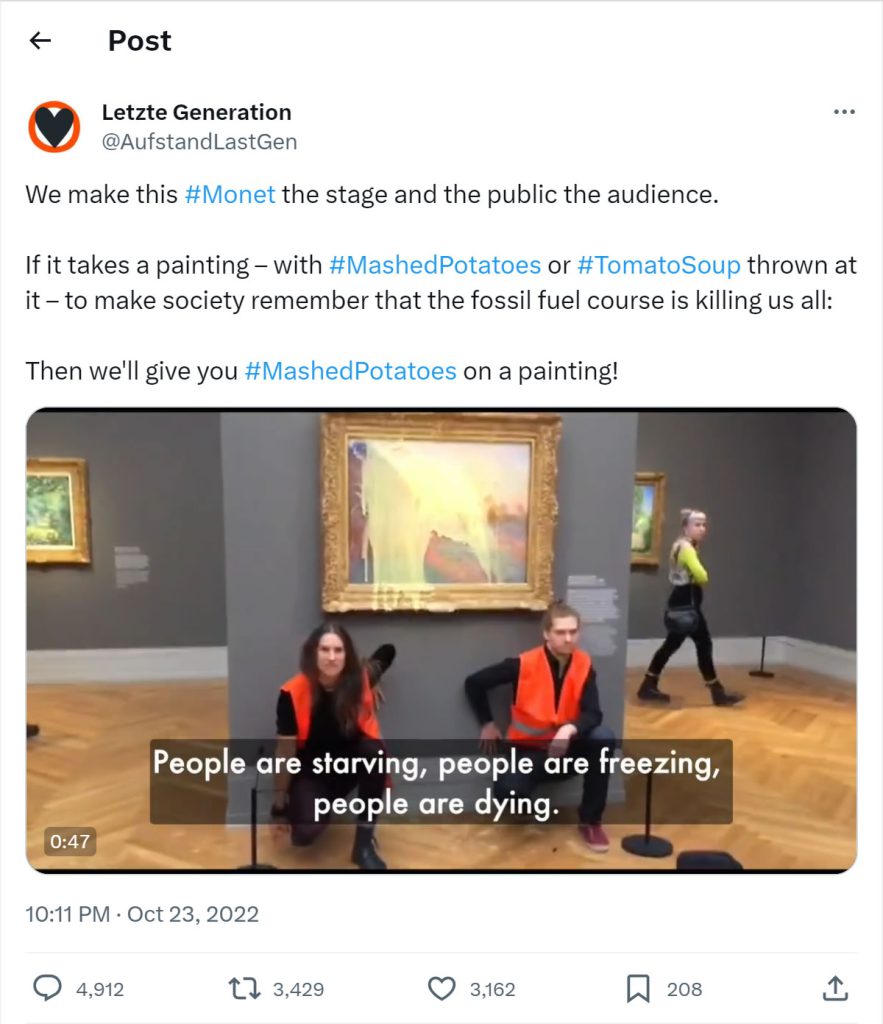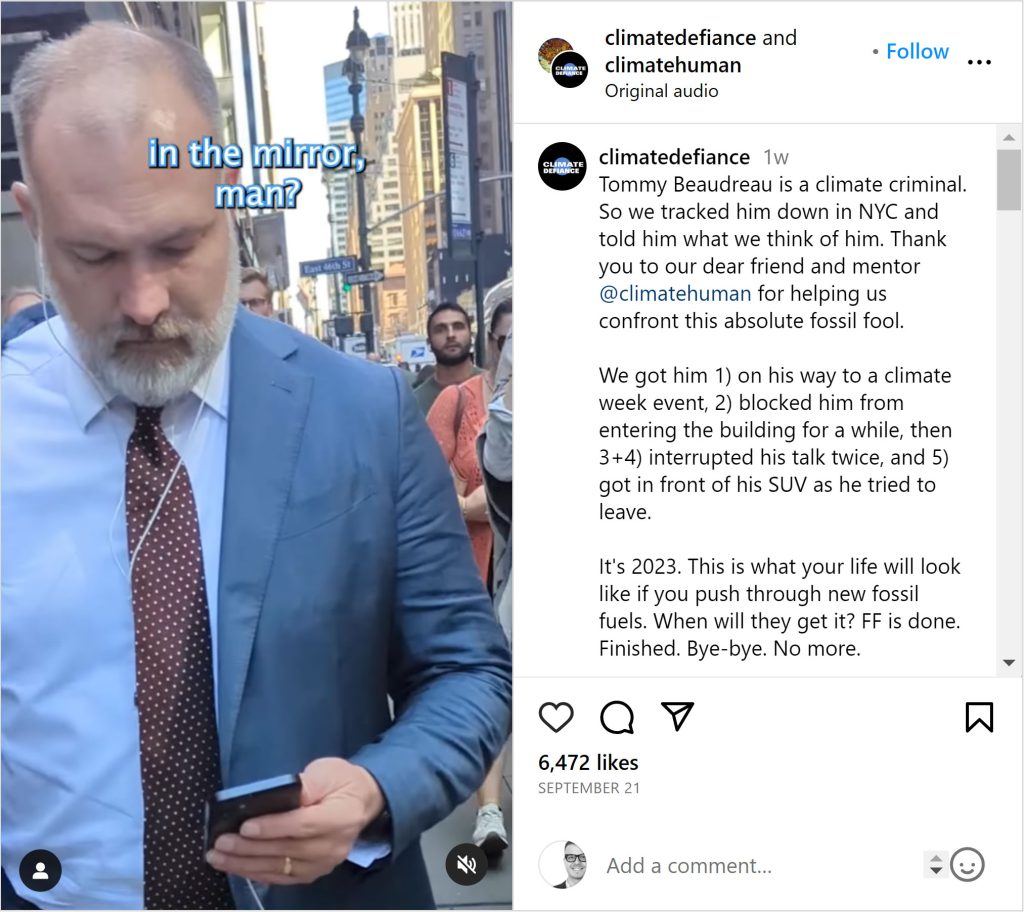Shaming “How-Dare-You” communication new climate activist trend?
In this first blog post from my side, I’m interested in taking a closer look at the language, communication, and rhetoric used by climate activists. I am interested in climate change communication – how the climate crisis is communicated by different actors in society and how it is received. I am especially fascinated by feelings and emotions connected to climate change communication. What kind of emotions does the sender intend to trigger at the receiver end and with hope for what action? Equally interesting is of course to understand how climate change communication is perceived by the receiver and what behavior changes it potentially leads to.
International development organizations have for quite some time worked with communication with the intent to trigger emotions such as pity, compassion, and sympathy. We are all familiar with donor-driven humanitarian aid communication illustrating starving children, women outside homemade tents, and young girls with big bellies as a result of child marriage. These explicit photos or videos of human suffering are often on social media accompanied by heart-breaking music and a voice-over calmly informing that YOU have the power to make a difference in these people’s lives.
This type of communication has for some time been heavily debated within the Communication for Development (C4D) field, where it has been criticized for its morality and lack of agency of the people on display and what actual change this communication can contribute to (McAnany, 2012). Even though the heart-breaking compassionated portraits appealing to pity still is commonly produced and used, some organizations such as UNICEF and UNHRC appear to actively move away from this type of communication and instead, in line with ideas and C4D theory and practice described by for example Tufte (2017) and Freire (2017), focus on dignified portraits, participation, and empowerment.
So why do I tell you about compassionated portraits from international development organizations when the focus of this blog is activist communication? Recently there appears to be a growing trend, in what could be called “how-dare-you” communication, from climate activists which stands in stark contrast to the compassionated portraits from international development organizations. Instead of appealing to pity, sympathy, and goodwill, this type of communication has the intent to do quite the opposite. With Greta Thunbergs’s famous “How Dare You”-speech as the trigger (?) and the inspiration for the name for the trend proposed here, more activists, especially in the climate movement, use communication where the feelings aimed at triggering appear to be shame, guilt, and humiliation. Of course, there has always been a noticeable difference in communication methods used by international development organizations and activists, where communication from the first one many times might be filtered by layers of bureaucracy, politics, and strategies, while the other is more unfiltered and louder. A difference that is further explored in Tufte’s (2017) chapter “Noisy Activism and Silent Communication Work?”.
Various forms of activist communication styles could be connected to the so-called “How Dare You” trend but the shaming factor is common for all of them. In Greta’s famous “How Dare You”-speech from the United Nations Climate Action Summit in New York 2019, the shaming is clearly directed to target world leaders. The shaming is complemented with rhetoric which could be interpreted to also trigger guilt, with sentences such as “I shouldn’t be up here” and “you have stolen my childhood” (United Nations, 2019).
Other activists use more implicit communication styles to convey the same message. During 2022 climate activism took a new shape with several chases of art vandalism reported in different countries. In many cases, both the public and media appeared to have a hard time connecting the dots between what mashed potatoes thrown at expensive art had to do with the climate crisis, but when listening to what was actually being said by the climate activists there is a clear rationale and also shaming behind their strikes. The communication method used by the German-based climate activist group Last Generation, who was behind the strike in Museum Barberini in Potsdam where mashed potatoes were thrown at a Claude Monet painting, could be interpreted as implicit shaming. By connecting people’s affection for art with their loss of affection for what is happening with people and the planet as a consequence of the climate crisis, shame is created by highlighting the disproportionally irrelevant reaction of care towards material things when put in relation to real risks of danger for humans, the planet, and life. “How can you care about a painting on a piece of paper and not care about the destruction of our one common home” appeared to be the common logic and foundation for the shame of these strikes.
From implicit shaming to hands-on, personal, explicit shaming, let’s talk about a recently published video that was posted on Instagram on the accounts of Climate Human (2023) and Climate Defiance (2023). The video features famous NASA scientist turned activist Peter Kalmus confronting American politician Tommy P. Beaudreau for signing off the so-called Willow project enabling fossil fuel expansion. Together with a choir of activists from the youth-led group Climate Defiance, Kalmus is seen accompanying (confronting/attacking?) Beaudreau on his way to a climate event in Manhattan blaming him for not listening to the scientists and for risking billions of lives, followed by questions such as “how can you go to bed at night?” and “how can you look at yourself in the mirror?” The choir from Climate Defiance is then seen physically stopping Beaudreau from entering the building to the event while repeatedly signing “Tommy signed Willow, f**k you man!”. The shaming is obvious, but instead of appealing to guilt and regret as seen in the speech from Greta, or logic and perspective as in the art case, the rhetoric here appears instead to be aiming at humiliation and maybe also fear of being personally confronted or attacked.
Shaming “How Dare You”-communication appears to be a response to the rapidly escalating climate crises and the inaction from people in power to address it. The common ingredients and frame of this type of communication seem to be:
- shaming (could be explicit or implicit and presented in different ways and where tone of voice can vary)
- directed towards a receiver (person, group in society, company, community, state etc)
- linked to the receiver’s inaction or actions which is seen as contributing to the climate crisis.
What do you think about shaming “How Dare You” communication?
Effective? Can shame lead to climate-positive behavioral change by appealing to guilt, humiliation, regret, or even fear? Are some forms, such as collective shaming, okay while other forms, such as personal shaming, cross the line? With scientists loudly warnings about the need for switching to emergency mode, maybe all forms of communication pressuring us into that is needed. However, as tackling the climate crisis requires global, collective action I can’t help wondering about the risks of increased polarization and the risk of an increased perception of climate activists being radicals and with that an “unrepresentative focus group” that can be ignored, as Tufekci describes it (Tufekci, 2017, s. 190). Final verdict: is this illegit activism?
References
Climate Defiance (@climatedefiance). (2023, October 2). Instagram Brand Profile. https://www.instagram.com/climatedefiance/
Climate Human (@climatehuman). (2023, October 2). We found the guy that signed off on the Willow project [Video]. Instagram. https://www.instagram.com/reel/CxbjKZEuYxO/
Climate Human (@climatehuman). (2023, October 2). Instagram Brand Profile. https://www.instagram.com/climatehuman/
Delfosse, C. (n.d.). 17 ways refugees are leading on sustainable development. UNHCR. https://www.unhcr.org/news/stories/17-ways-refugees-are-leading-sustainable-development
Freire, P. (2017). Pedagogy of the Oppressed. London: Penguin Modern Classics.
Kalmus, P. (2018). Peter Kalmus [Personal Website]. https://peterkalmus.net/
Letzte Generation. (2023, October 2). We make this #Monet the stage and the public the audience. X. https://twitter.com/AufstandLastGen/status/1584185689541054464
McAnany, E. G. (2012). Saving the World: A Brief History of Communication for Development and Social Change. University of Illinois Press.
Tommy Beaudreau. (2023, September 21). In Wikipedia. https://en.wikipedia.org/wiki/Tommy_Beaudreau
Tufekci, Z. (2017). Twitter and Tear Gas-The Power and Fragility of Networked Protest. Yale University Press.
Tufte, T. (2017). Communication and Social Change: A Citizen. Polity.
United Nations. (2019). Climate Action Summit 2019 – Morning Session [Video]. YouTube. https://www.youtube.com/watch?v=haewHZ8ubKA&t=2728s




